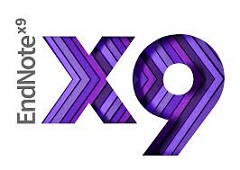If the Virginia Henderson Global Nursing e-Repository sounds familiar but is not something that you have accessed recently, it may be a good time to return for another look as this freely-available online resource has evolved quite a bit throughout its history. First conceived of in 1979, it began its presence on the Internet in 1995 and had several re-designs over the years as the Virginia Henderson International Nursing Library (1). Re-named the Virginia Henderson Global Nursing e-Repository in 2013, it was further transformed into the “open-access, full-text academic and clinical repository” that its developers continue to improve and upgrade even today.
From their website:
“The Virginia Henderson Global Nursing e-Repository (Henderson Repository) is the only repository solely dedicated to sharing works created by nurses. It is an open-access digital academic and clinical scholarship service that freely collects, preserves, and disseminates full-text nursing research and evidence-based practice materials. The repository is a resource of the honor society of nursing, Sigma Theta Tau International.
All nurses are invited to submit research-related or evidence-based practice works. These works may be authored by a single nurse, multiple nurses, or a collaborative group that includes a nurse. There is no fee to submit, and authors retain copyright to their materials, maintaining control of their work via a self-archiving mechanism.”
The Henderson Repository is a particularly good option for nurses interested in sharing their scholarship since it contains file/document types beyond published articles, including conference presentations, and accepts content from nurses of all degree levels and affiliations. Because it extends beyond the typical content found in commercial publications, this resource has been used as a grey literature source in systematic reviews publications (2, 3). With both basic and advanced search functionality, as well as, extensive browsing options, including by Author, Level of Evidence, and CINAHL Subject Headings, the Henderson Repository interface accommodates both novice and expert searchers.
(1) “Virginia Henderson International Nursing Library” Journal of the Medical Library Association vol. 94,3 (2006): 360–361.
(2) Burns T, Fernandez R, Stephens M. The experiences of adults who are on dialysis and waiting for a renal transplant from a deceased donor: a systematic review. JBI Database System Rev Implement Rep. 2015 Mar 12;13(2):169-211.
(3) Butler M, Collins R, Drennan J, Halligan P, O’Mathúna DP, Schultz TJ, Sheridan A, Vilis E. Hospital nurse staffing models and patient and staff-related outcomes. Cochrane Database Syst Rev. 2011 Jul 6;(7):CD007019.
For more information on this or other MSK Library resources, feel free to Ask Us!
